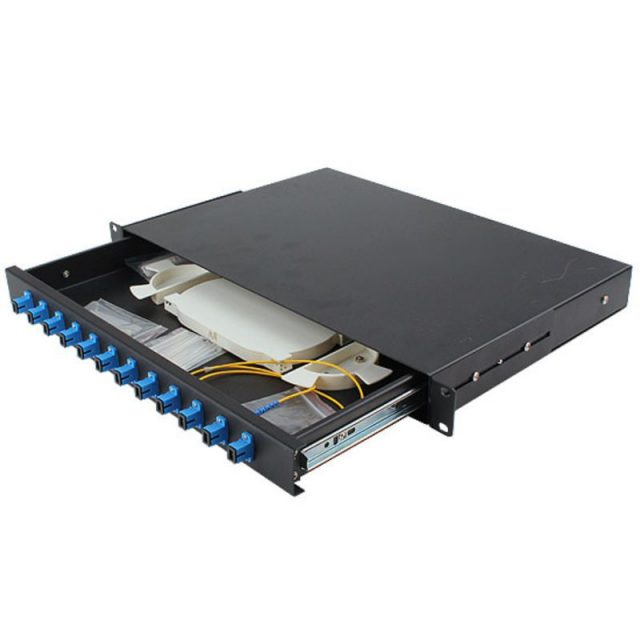Fiber distribution panel, also known as fiber optic patch panel. There are various fiber optic distribution panels in the market, you may wonder how to select the right one for your application needs. Before buying a patch panel, you’d better consider the following factors:
Wall Mount or Rack Mount
The first thing to consider is where you’ll install the distribution panel. Wall-mountable mainly is fitted into the telecommunications room. Rack-mountable type applies to network or server racks.
Loaded or Unloaded
Fiber optic patch panel is available to pre-load fiber adapters and pigtails. With them, you can simply snap in the fiber cable connections. However, if one port gets damaged, it will be broken forever. Furthermore, if you want to change your connectors from the SC to LC ones, you’ll need to buy a new LC Loaded fiber adapter panel. Unloaded fiber distribution panels, which are more flexible, have not such limitations.
Size and Ports
Fiber distribution panels are available in 1U, 2U, or even 4U. The bigger the size, the larger the fiber capacity. Among them, the 1U fiber patch panel is the most popular kind. The number of ports is another important factor, especially in high-density cabling. They usually have 24, 48, 96, or even 144 fiber ports. If there is not enough cabling space, fiber distribution panels with more ports will be a preferred choice.
Conclusion
Fiber cable installation and management is a tough thing to do, especially when there are hundreds or even thousands of cables. The fiber distribution panel offers great help in eliminating wire clutters, providing space, and protection for all the fiber cables needed by technicians in setting up fiber-optic links. It also makes cable management and troubleshooting work much easier. Its main function is for accommodating fiber cable terminations, connections, and patching. With fiber optic distribution panels, network technicians can control massive fiber cables and connection points in a standard panel or enclosure structure. Therefore, fiber distribution panels make it simple and convenient for us to do cable management and maintenance.


 Fiber Optic Termination Boxes
Fiber Optic Termination Boxes